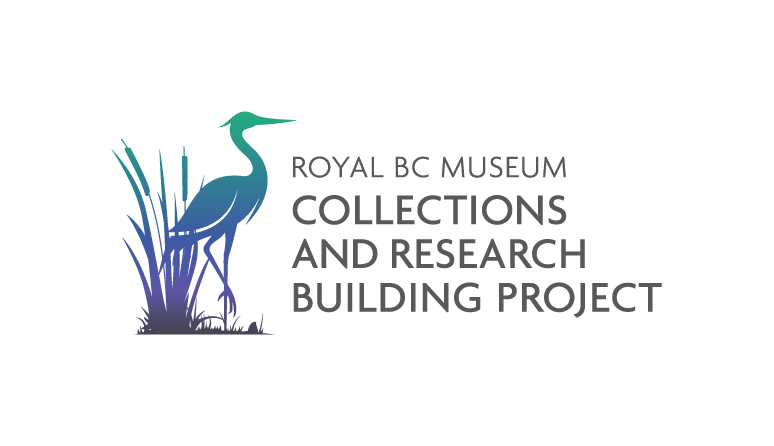Moving History: Preparing the Royal BC Museum’s Collections for the PARC Campus
May 2025
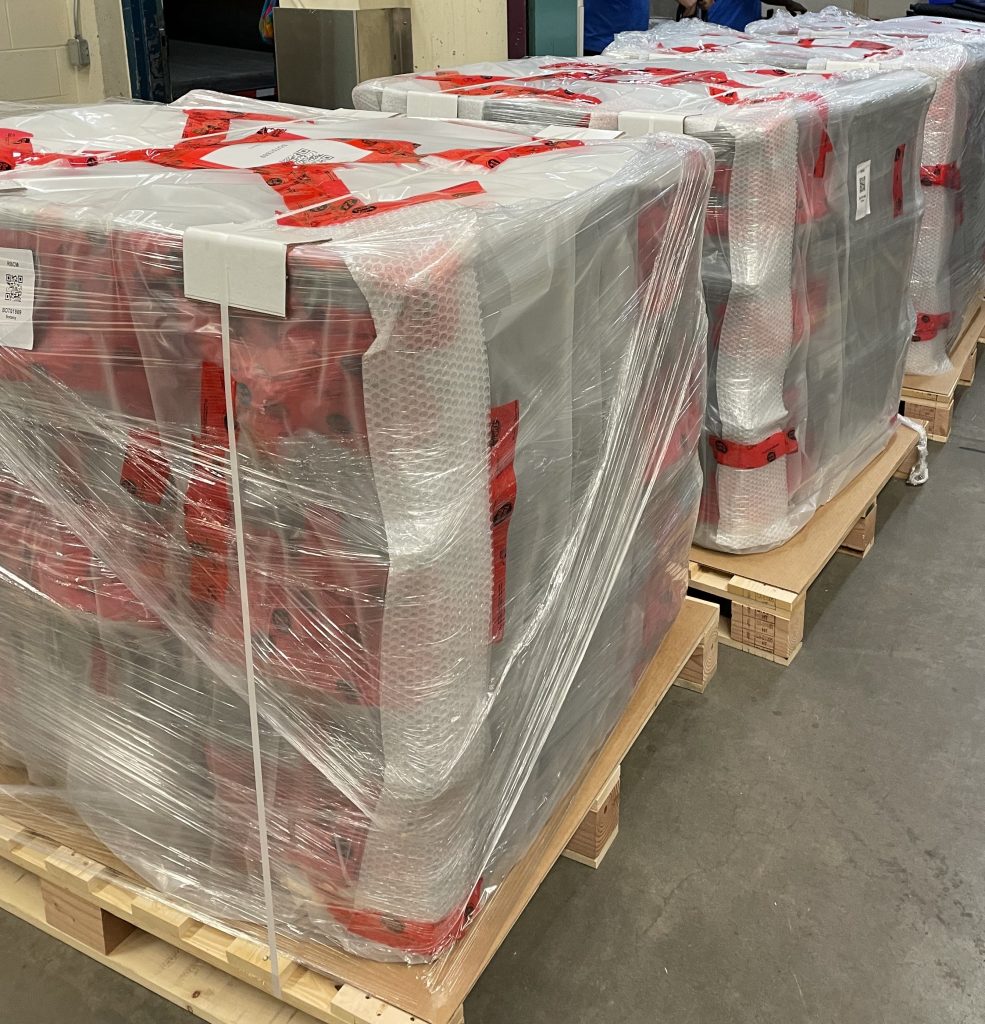
As the Royal BC Museum gears up for the opening of the new PARC Campus (provincial archives, research, and collections) that is being built in Colwood, an enormous behind-the-scenes effort is underway: the careful preparation, packing, and moving of the Province’s vast and varied collections. While only 1% of the collection is on display in the museum’s galleries, the majority—housed in storage throughout the downtown museum—will soon be moved and cared for at the PARC Campus.
The move is no small feat. Every item—from the tiniest beetle to massive mining tools—must be carefully handled and safely transported. Since 2022, dedicated teams of prep, pack, and move Technicians, Senior Team Leads, Conservators, Collection Managers, Curators, Archivists, Registrars, and Data Stewards have been working together to ensure that this critical transition is carried out with precision and care.
So, what exactly does this look like in action?
It starts with careful assessment and planning. Each object is evaluated for condition and needs, whether that’s protective wrapping, freezing for pest control, or custom packaging. Items requiring pest management are bagged or wrapped and frozen at –20°C for two weeks, ensuring that unwanted guests don’t hitch a ride to the new facility. The herbarium, for example, is being packed into vapor-sealed totes to protect it from condensation during freezing.
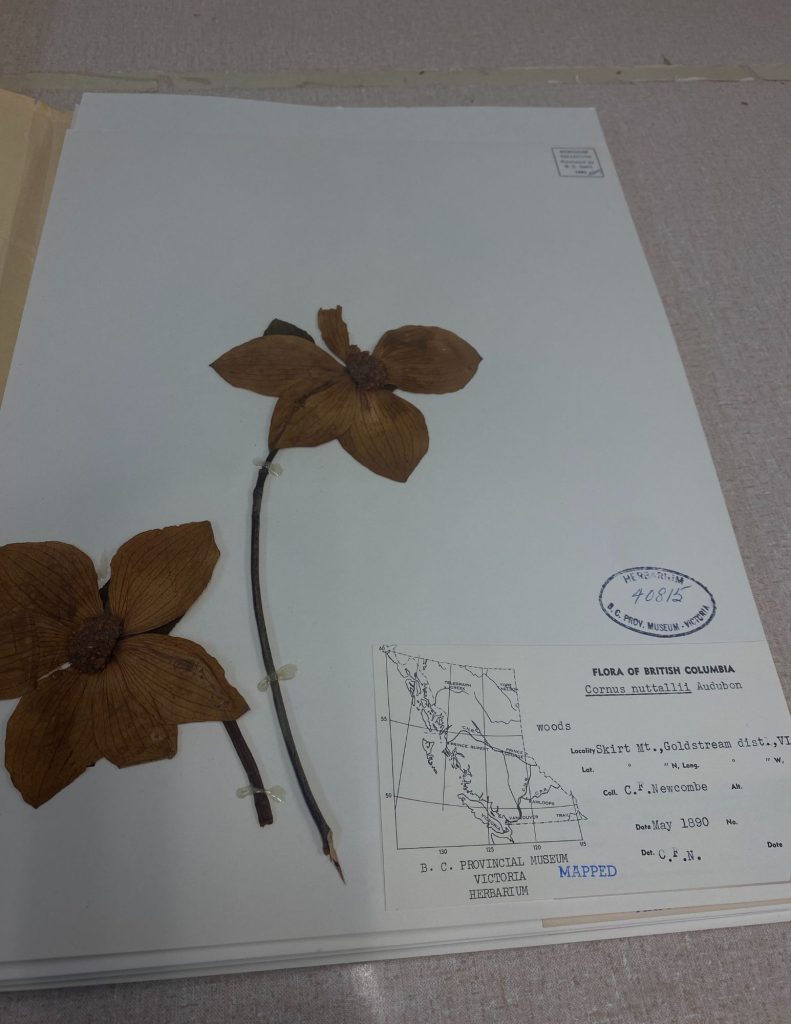
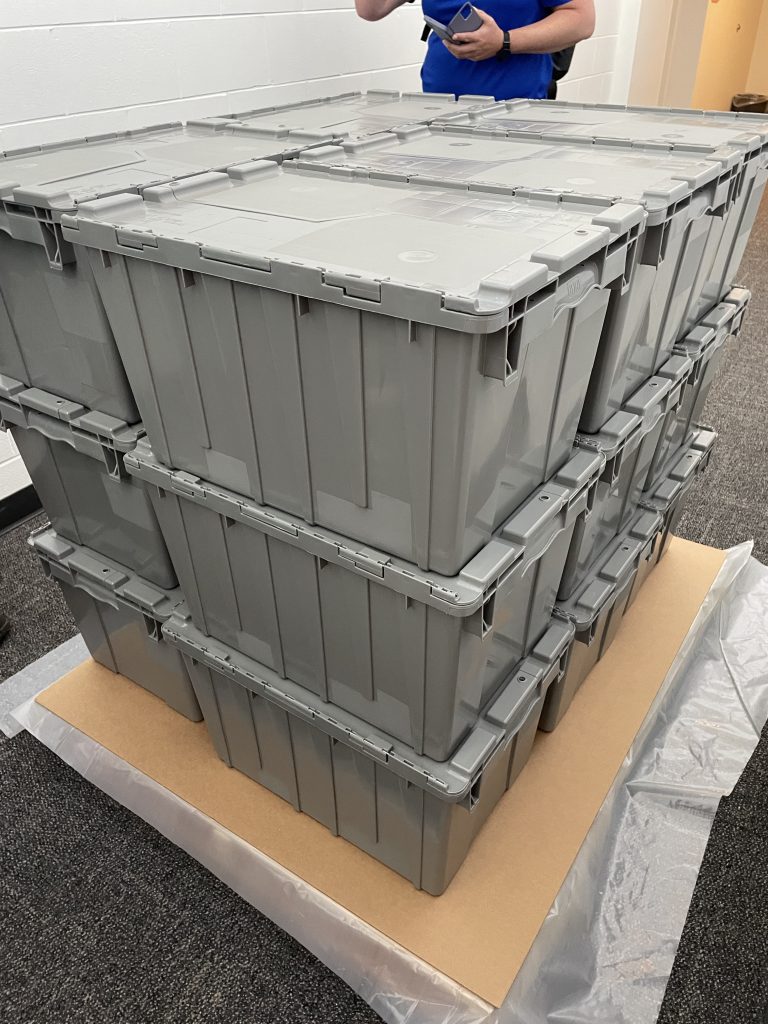

Preparing and packing herbarium into totes before freezing
Collections are packed in all sorts of containers—crates, boxes, totes, and cabinets—with procedures developed specifically for each type. When possible, original or reused storage containers like garment inserts or collection cabinets are used to minimize waste and reduce handling risks. Rolled textiles, for instance, are wrapped in acid-free tissue and stored in garment inserts, which are also used to house other human history artifacts like tools and equipment.
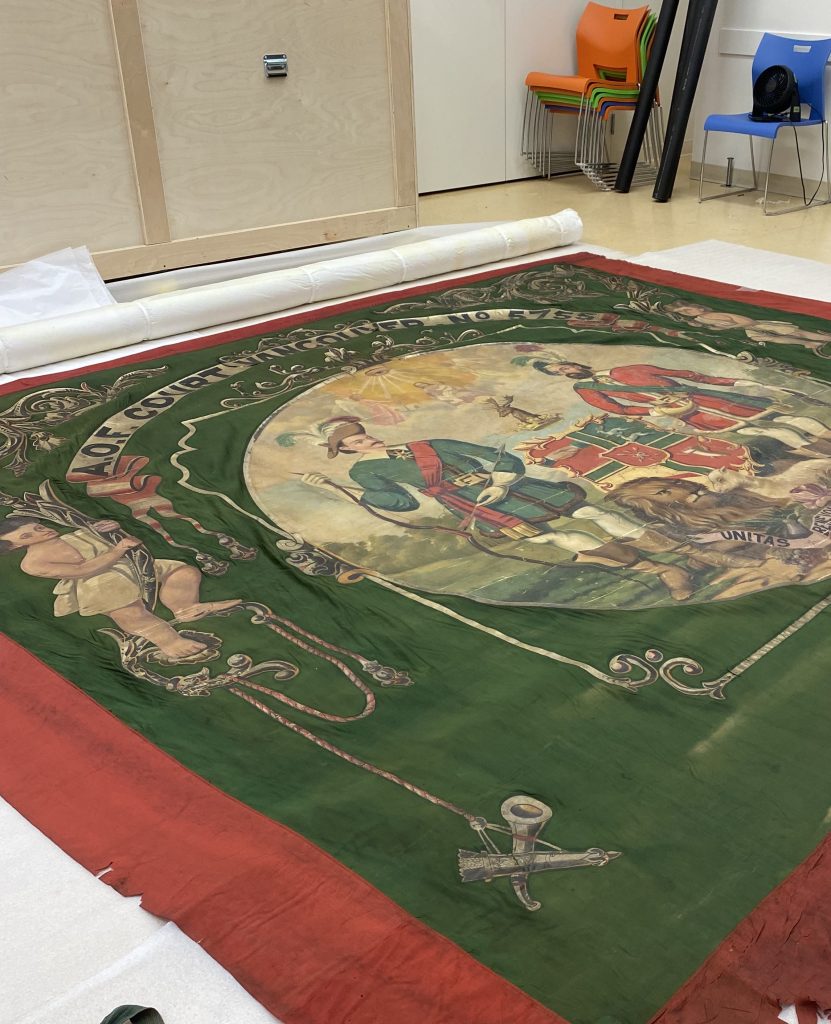
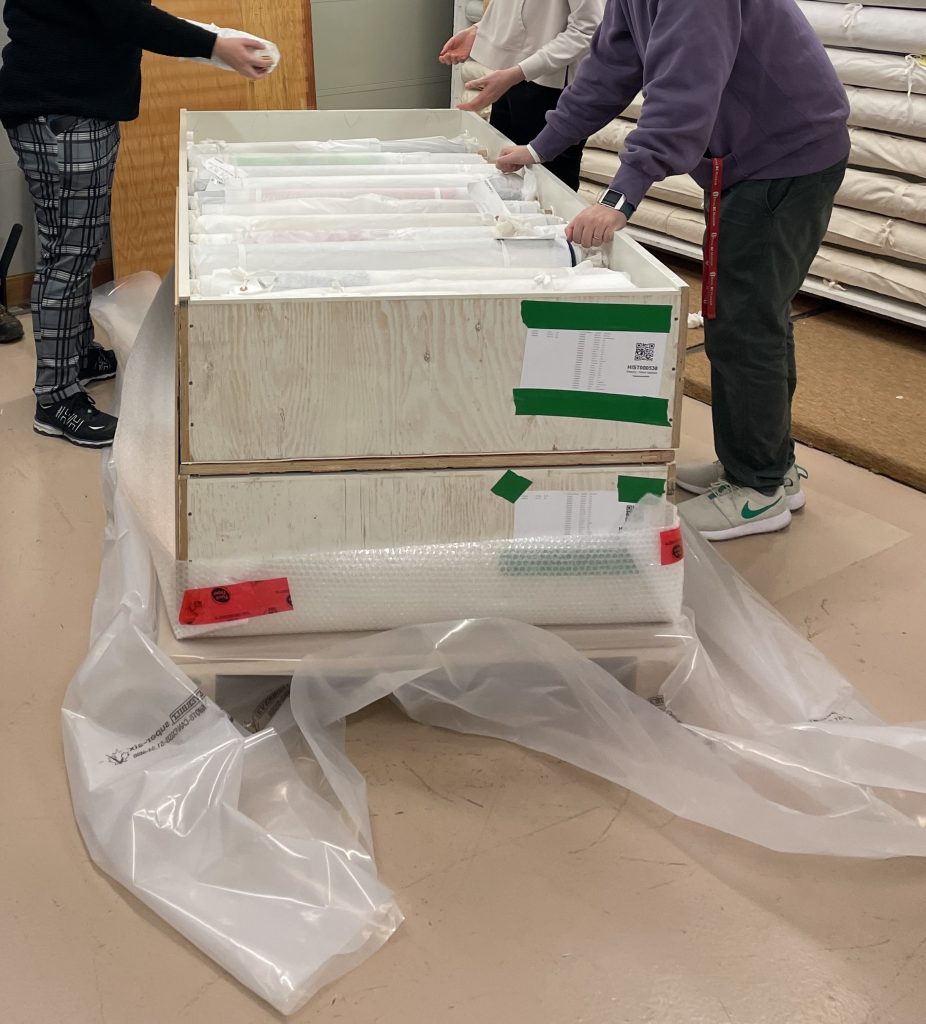
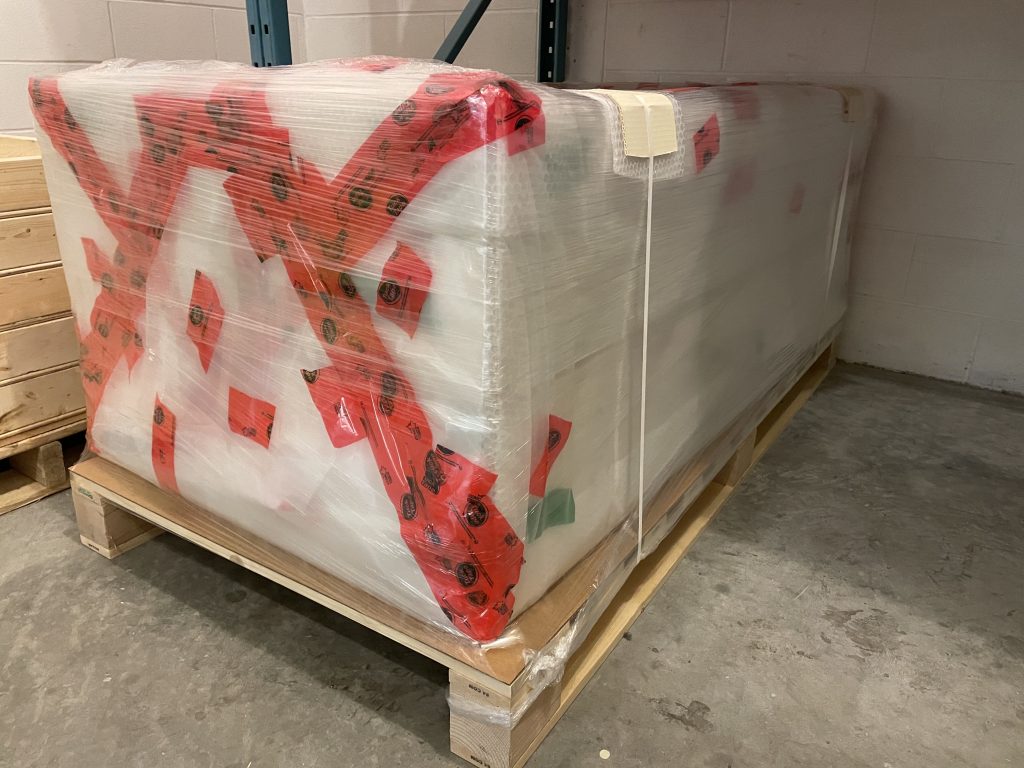
Rolled textiles are protected with acid free tissue paper, then stored in reused garment inserts.
Every object’s location is meticulously tracked using QR codes and collection software, which allows staff to know exactly what is packed where—from the pallet, to the container, to the shelf. This system will be essential when the time comes to unpack and organize collections at the new PARC Campus.
The scope of this project is as broad as the collections themselves. Over the past two years, the prep, pack, and move team has packed hats, bats, owls, fossils, books, antlers, furs, garments, and even delicate glass plate negatives. Every item is packed with the same careful attention to detail to ensure that it arrives in Colwood safely and in the same condition it left.
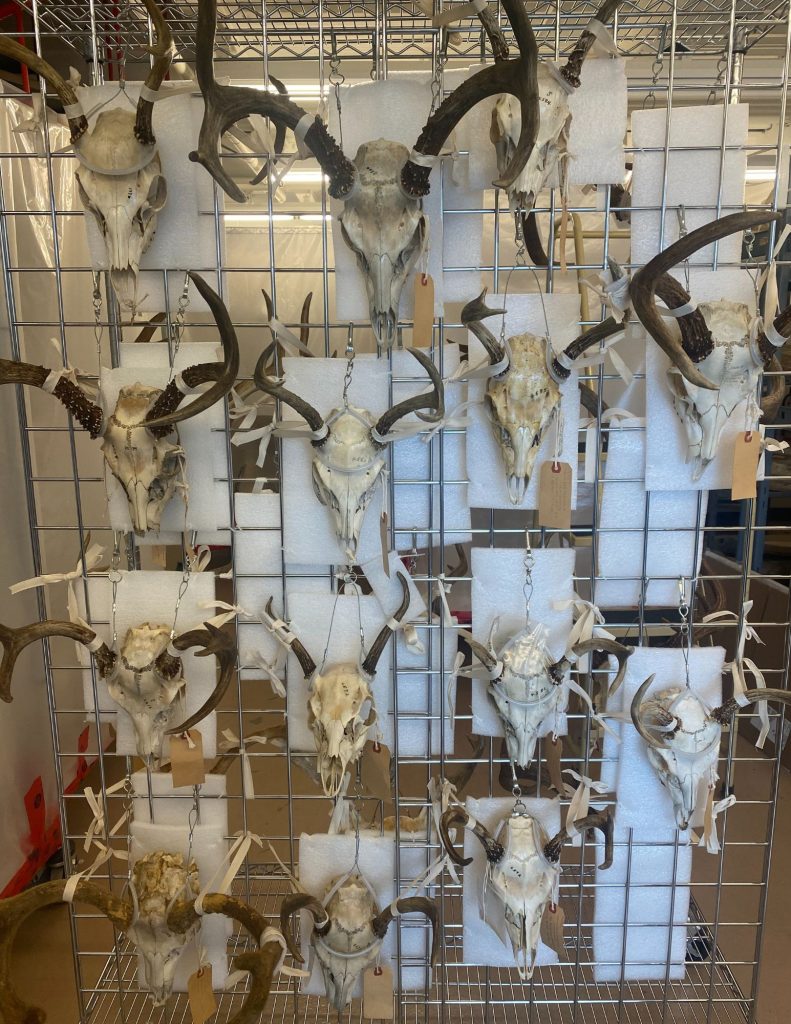
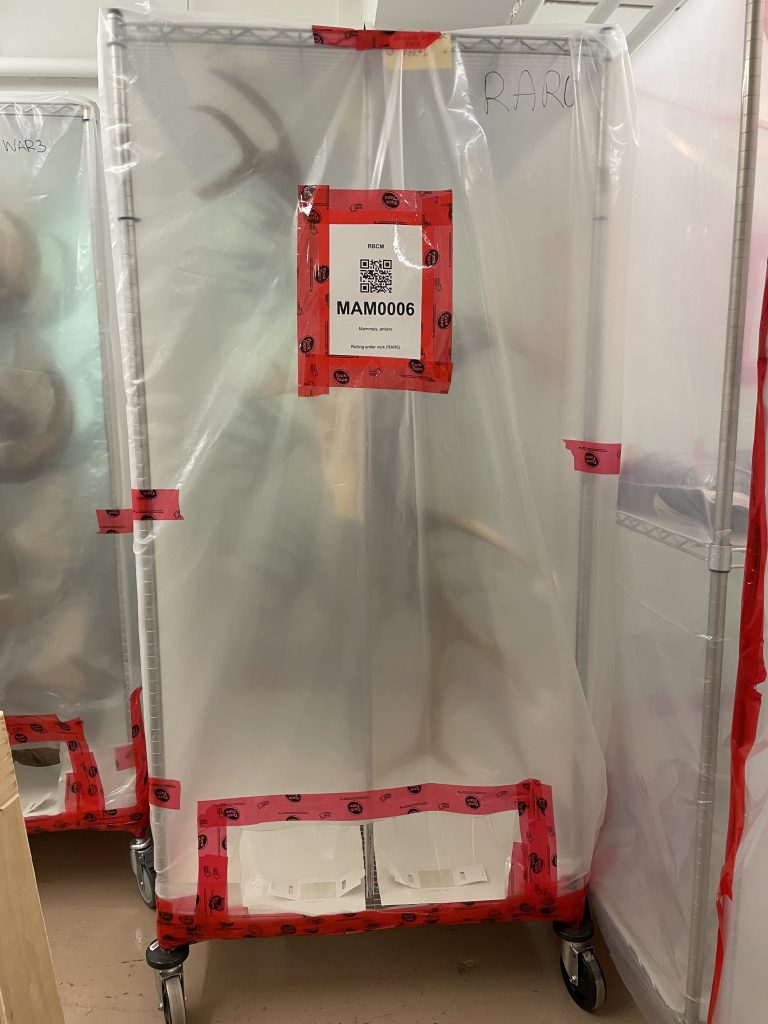
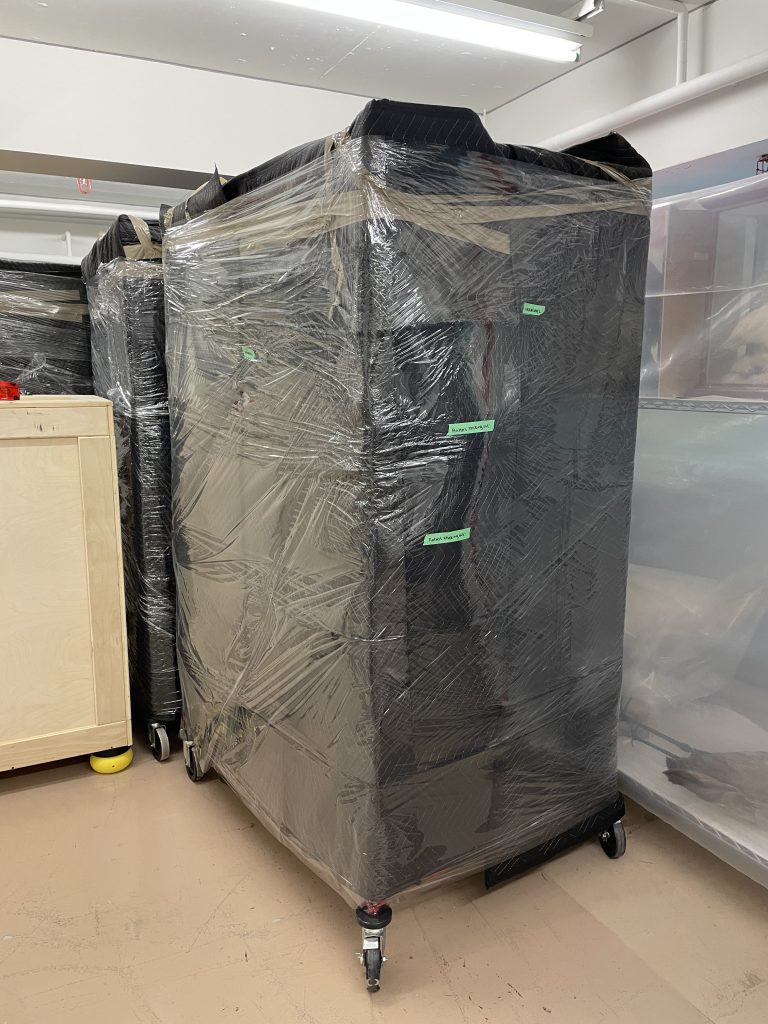
Preparing and packing antlers.
As the new campus nears completion, the work continues—methodically, collaboratively, and with deep respect for the collections that tell the stories of British Columbia’s natural and human history.
Stay tuned as we share more about the process, the challenges, and the milestones along the way. This is one of the largest moves of museum and archival material in BC’s history—and it is well underway.
